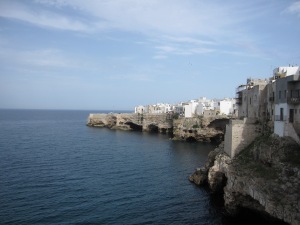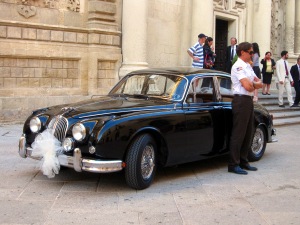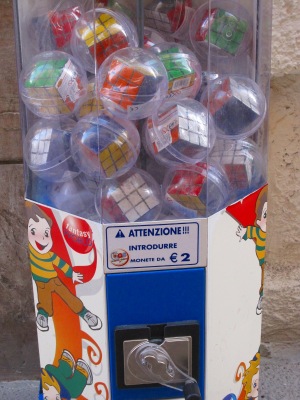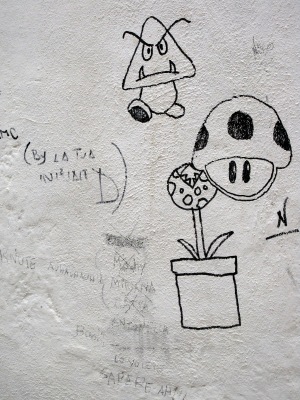Clockwise: Gargoyles on a cathedral in Lecce, the 16th century watchtower of Torre Guaceto, a driver awaits outside a wedding ceremony, the cliffs of Pogliano a Mare
Located in the southeastern part of Italy (the heel of the boot), Puglia is a peninsula of a peninsula, surrounded by sea and just a 12-hour ferry ride across the Adriatic to Greece. Ah, the sea. Having lived in the midwest for several years, it’s been a while since I’ve heard the crash and smelled the sting of saltwater. And as you can imagine, the sea plays a major role in shaping Puglian history. Being first point of entry by sea, Puglia has been conquered by pretty much every major civilization and conquering marauder that has attacked Italy in the past few thousand years. Ergo, it has a rich history of influences from a variety of cultures. As such, the region’s people, places and activities are heavily influenced by the bountiful amounts of sunlight, seafood and historical exchange.
The cutest little kitten in Puglia, fluffy ducklings scamper about
We spent a week in Puglia, enjoying the break from the cold and rainy (Chicago-like) weather in Bra. Most of our time was spent visiting a variety of local farmers, artisanal producers (olive oil, cheese, cured meats, chocolate) and vineyards, but we did have a little bit of free time to relax on the beach and tour the towns. Our visits to the masseria (farm) were particularly delightful. There’s nothing like seeing a cow take a dump 5′ away from you at 10 am, then eating fresh ricotta from the raw milk of those same cows afterwards. Sweet, lightly salted creamy cubes of perfection.
Clockwise: Typical Truli structure, a man and his horse, basket and porcelain fruit display inside the truli, cow is Not Amused by my paparazzi antics
One of the distinctive architectural features of the rural Puglian landscape is the proliferation of trulli, or cone-roofed warehouses that were used to store grapes after harvest. We had the opportunity to step inside one, and due to the thick walls, it was surprisingly cool inside. For more trulli action, you can go to Alberobello to see hundreds of preserved trulli. The town centers of Puglia tend to feature Greek-style architecture, with overhanging balcony gardens, blue signage and white walls. Unfortunately, there seemed to be a large amount of penis graffiti on many of the otherwise clean walls. I guess the antics of teenage boys around the world are often the same after all.
Clockwise: Vending machine full of Rubik’s cubes, prickly pear tree, Super Mario graffiti, sundial
I’ve been so busy with schoolwork that I haven’t really gotten a chance to explore much beyond Bra and Piedmont, but one of the things that struck me on this trip is the amount of history present all around Italy. We saw several examples of Roman-era ruins, often with modern buildings built over or around them, and examined the site of Virgil’s death. Our tour guide in Brindisi casually pointed out several paintings to us inside a cathedral with the comment, “These are from the 16th century, so they’re very modern.” Wait a minute, my home country hadn’t even been invented at that point!
More photos to come of food and food products…













